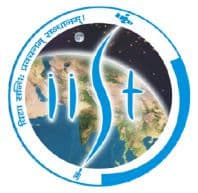Latest Applications Open 2024:
BCECEB conducts the BCECE Entrance Exam for admission into Engineering, Pharmacy, and Agriculture. BCECE released an official Syllabus for admission into Engineering, Pharmacy, and Agriculture. The Syllabus consists of Physics, Chemistry, Biology, and Mathematics. The Bihar Combined Entrance Competitive Examination (BCECE) is a highly competitive examination conducted for admission into various undergraduate courses in Bihar. One of the key subjects included in this examination is Mathematics.
The BCECE Mathematics syllabus encompasses a wide range of topics designed to assess aspiring candidates’ mathematical aptitude and problem-solving skills. This comprehensive syllabus covers fundamental mathematical concepts such as algebra, calculus, geometry, trigonometry, statistics, etc. Candidates preparing for the BCECE Mathematics paper must have a strong grasp of these topics to excel in the examination for coveted undergraduate courses in Bihar.
Here, we will mention the complete BCECE 2024 Syllabus for Mathematics. The BCECE exam is done in one phase. Candidates can also check the BCECE 2024 Syllabus for Physics, Chemistry, and Biology.
BCECE 2024 Mathematics Syllabus – Available
BCECE 2024 Mathematics Syllabus is available here to download. Click to Download Free PDF.
Sets And Functions
Sets: Sets and their representations, Empty set, Finite & Infinite sets. Equal sets, Subsets, Subsets of the set of real numbers especially intervals (with notations). Power set, Universal set, Venn diagrams, Union and Intersection of sets, Difference of sets, Complement of a set.
Relation & Functions
Ordered pairs, Cartesian product of sets, Number of elements in the Cartesian product of two finite sets. Cartesian product of the reals with itself (up to R X R X R). Definition of relation, pictorial diagrams, domain, codomain, and range of a relation.
The function is a special kind of relation from one set to another. Pictorial representation of a function, domain, co-domain & range of a function.
The real-valued function of the real variable, domain, and range of these functions, constant, identity, polynomial, rational, modulus, signum, and greatest integer functions with their graphs, sum, difference, product, and quotients of functions.
Trigonometric Functions
positive and negative angles. Measuring angles in radians & in degrees and conversion from one measure to another. Definition of trigonometric functions with the help of the unit circle. Truth of the identify sin2x + cos2 x = 1, for all x. Signs of trigonometric functions and sketch of their graphs.
Expressing sin (x + y) and cos (x + y) in terms of sin x, sin y, cos x, & cozy. Identities related to sin2x, cos2x, tan2x, sin3x, cos3x, and tan3x. The general solution of trigonometric equations of the type sin? = sin, cos? = cos and tan? = tana. Proof and simple application of sine and cosine formula.
Algebra
Principle of Mathematical Induction: Processes of the proof by induction, motivating the application of the method by looking at natural numbers as the least inductive subset of real numbers. The principle of mathematical induction and simple applications.
Complex Numbers and Quadratic Equations: Need for complex numbers, especially v-1, to be motivated by the inability to solve every quadratic equation. Brief description of the algebraic properties of complex numbers.
Argand plane and polar representation of complex numbers. Statement of Fundamental Theorem of Algebra, solution of quadratic equations in the complex number system.
Linear Inequalities
Linear Inequalities. Algebraic solutions of linear inequalities in one variable and their representation on the number line. Graphical solution of linear, inequalities in two variables. A solution to a system of linear inequalities in two variables – graphically.
Permutation & Combination
The fundamental principle of counting. Factorial n. (n!) Permutation and combinations, derivation of formulae and their connections, simple applications.
Binomial Theorem
History, statement, and proof of the binomial theorem for positive integral indices. Pascal’s triangle, General and middle term in binomial expansion, simple applications.
Sequence & Series
Sequence and Series. Arithmetic progression (A.P.) arithmetic mean (A.M.) Geometric progression (G.P.), general term of a G.P. Sum of n terms of a G.P., geometric mean (G.M.), the relation between A.M. and G. M. Sum to n terms of the special series,? n and ?n2 and ?n3.
Co-Ordinate Geometry (I)
Straight Lines:
Brief recall of 2D from earlier classes. The slope of a line and angle between two lines. Various forms of equations of a line: parallel to axes, point-slope form, slope-intercept form, two-point form, intercepts form, and normal form. General equation of a line, Distance of a point from a line.
Conic Section:
Sections of a cone: circle, ellipse, parabola, hyperbola, a point, a straight line, and pair of intersecting lines as a degenerated case of a conic section. Standard equations and simple properties of parabola, ellipse, and hyperbola. Standard equation of a circle.
Introduction to Three Dimensional Geometry:
Coordinate axes and coordinate planes in three dimensions, Coordinates of a point. Distance between two points and section formula.
Calculus (I)
Limits and Derivatives:
Derivative introduced as rate of change both as that of distance function and geometrically, intuitive idea of limit. Definition of derivative, relate it to the slope of the tangent of the curve, the derivative of the sum, difference, product, and quotient of functions. Derivatives of polynomial and trigonometric functions.
Mathematical Reasoning
Mathematical Reasoning Mathematically acceptable statements. Connecting words/phrases – consolidating the understanding of “if and only if (necessary and sufficient) condition”, “implies”, “and/or”, “implied by”, “and”, “our”, “there exists” and their use through a variety of examples related to real life and Mathematics.
Validating the statements involving the connecting words – the difference between contradiction, converse, and contrapositive.
Statistics & Probability (I)
Statistics:
A measure of dispersion; mean deviation, variance, and standard deviation of ungrouped / grouped data. Analysis of frequency distributions with equal means but different variances.
Probability:
Random experiments: outcomes, sample spaces (set representation). Events: occurrence of events, ‘not’, ‘and’ ‘or’ events, exhaustive events, mutually exclusive events Axiomatic (set-theoretic) probability, connections with the theories of earlier classes. Probability of an event, the probability of ‘not’ ‘and’ & ‘or’ events.
Relations and Functions
Relations and Functions:
Types of relations: reflexive, symmetric, transitive, and equivalence relations, One to one and onto functions, composite functions inverse of a function, Binary operations.
Inverse Trigonometric Functions:
Definition, range, domain principal value branches. Graphs of inverse trigonometric functions Elementary properties of inverse trigonometric functions.
Algebra (II)
Matrices:
Concept, notation, order, equality types of matrices zero matrix transpose of a matrix, symmetric and skew-symmetric matrices, Addition, multiplication and scalar multiplication of matrices, simple properties of addition, multiplication and scalar multiplication.
Non-commutativity of multiplication of matrices and existence of non-zero matrices whose product is the zero matrices (restrict to square matrices of order 2.
Concept of elementary row and column operations, Invertible matrices, and proof of the uniqueness of inverse, if it exists; (Here all matrices will have real entries).
Determinants:
Determinants of a square matrix (up to 3 x 3 matrices), properties of determinants, minors, cofactors, and applications of determinants in finding the area of a triangle.
Adjoint and inverse of a square matrix. Consistency, inconsistency, and the number of solutions of the system of linear equations by examples, solving system of linear equations in two or three variables (having a unique solution) using the inverse of a matrix.
Calculus (II)
Continuity and Differentiability:
Continuity and differentiability, a derivative of composite functions, chain rule, derivatives of inverse trigonometric functions, derivative of implicit function. Concept of exponential and logarithmic functions and their derivatives.
Logarithmic differentiation. A derivative of functions expressed in parametric forms. Second-order derivatives, Rolle’s and Lagrange’s Mean Value Theorems (without proof), and their geometric interpretations.
Applications of Derivatives:
Applications of derivatives: rate of change, increasing/decreasing functions, tangents & normals, approximation, maxima, and minima (first derivative test motivated geometrically and second derivative test given as a provable tool). Simple problems (that illustrate basic principles and understanding of the subject as well as real-life situations).
Integrals:
Integration is an inverse process of differentiation. Integration of a variety of functions by substitution by partial fractions and by parts, only simple integrals. Definite integrals as a limit of a sum, Fundamental Theorem of Calculus (without proof).
Basic properties of definite integrals and evaluation of definite integrals.
Applications of the Integrals:
Applications in finding the area under simple curves, especially lines, areas of circles /parabolas/ellipses (in standard form only), area between the two above said curves (the region should be clearly identifiable).
Differential Equations:
Definition, order, and degree, general, and particular solutions of a differential equation. Formation of differential equation whose general solution is given. The solution of differential equations by the method of separation of variables, homogeneous differential equations of the first order and first degree.
Vectors And Three Dimensional Geometry (II)
Vectors:
Vectors and scalars, magnitude and direction of a vector. Direction cosines/ratios of vectors. Types of vectors (equal unit zero parallel and collinear vectors), position vector of a point, negative of a vector, components of a vector, the addition of vectors, multiplication of a vector by a scalar, position vector of a point dividing a line segment in a given ratio. Scalar (dot) product of vectors, projection of a vector on a line. Vector (cross) product of vectors.
Three – Dimensional Geometry:
Direction cosines/ratios of a line joining two points. Cartesian and vector equation of a line, coplanar and skew lines, the shortest distance between two lines. Cartesian and vector equation of a plane. The angle between (i) two lines, (ii) two planes, (iii) a line and a plane. A distance of a point from a plane.
Linear Programming
Linear Programming:
Introduction, the definition of related terminology such as constraints, objective function, optimization, different types of linear programming (L.P.) problems, the mathematical formulation of L.P. problems, graphical method of solution for problems in two variables, feasible and infeasible regions, feasible and infeasible solutions, optimal feasible solutions (up to three non-trivial constraints).
Probability (II)
Probability:
Multiplication theorem on probability. Conditional probability, independent events, total probability, Baye’s theorem, Random variable, and its probability distribution, mean and variance of haphazard variable. Repeated independent (Bernoulli) trials and Binomial distribution.
If you have any other queries about BCECE Mathematics Syllabus 2024, you can write your queries in the comment box given below.

As a dedicated Biology Science graduate, I’m passionate about sharing the latest updates in national and state entrance exams through my blog. I aim to keep aspiring students informed about exam trends, important dates, and changes in syllabi. With a keen interest in education, I strive to offer valuable insights for students navigating the competitive landscape of entrance examinations and admission tests. Stay updated with me.


